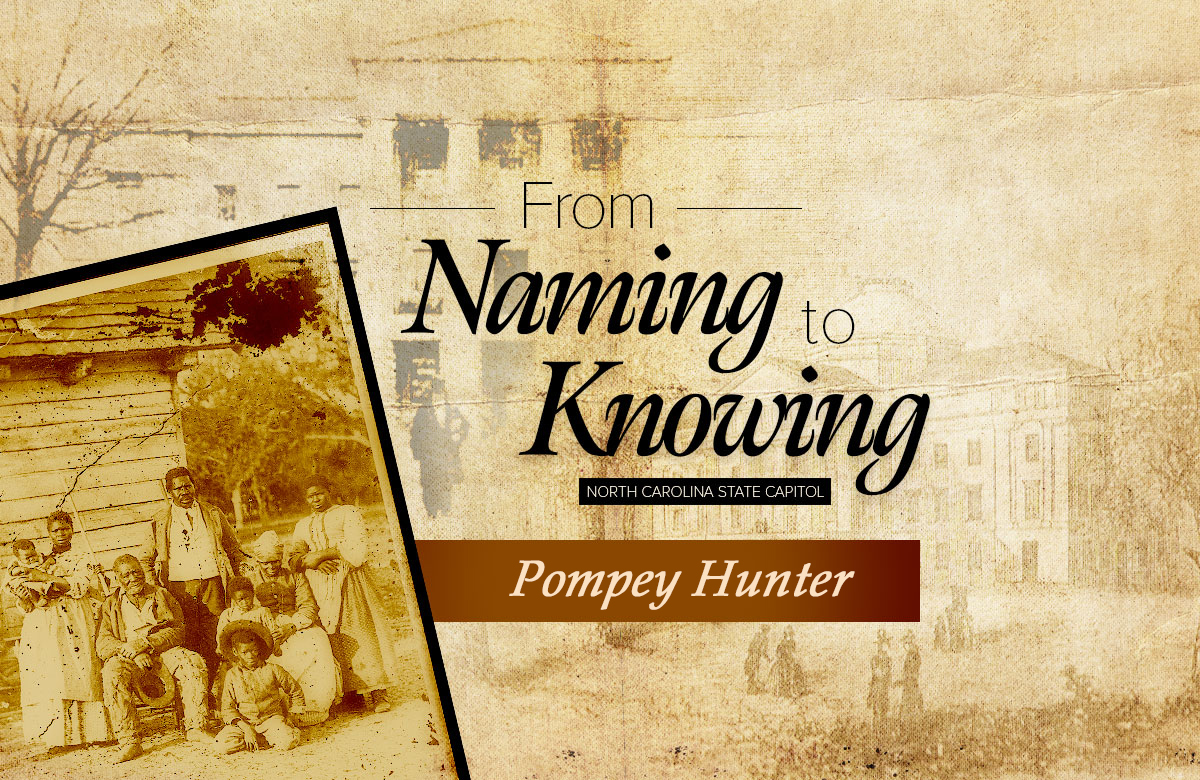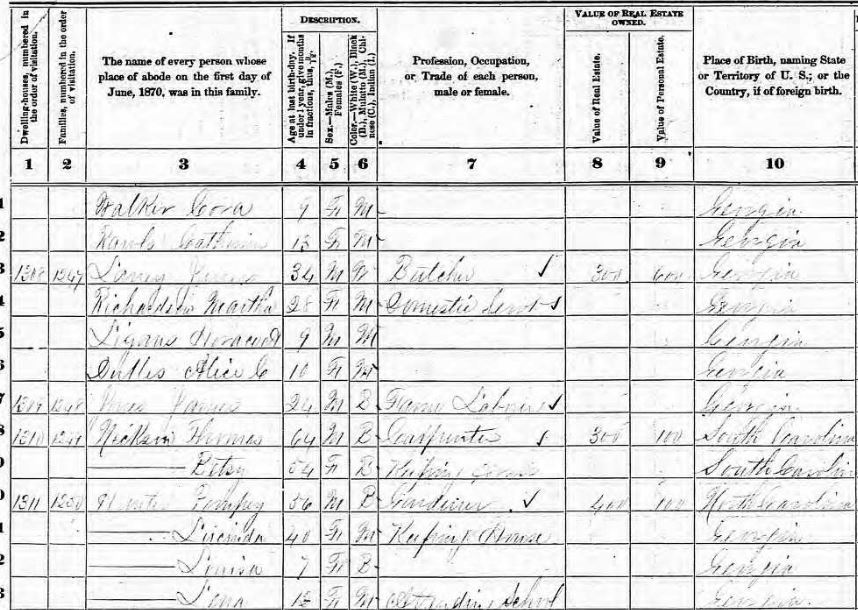
Pompey Hunter was born about 1814. Throughout his life, Pompey is seen in various documents as “Pompey,” “Pomfrey,” “Pomphery” or “Pompy.” Much about Pompey’s early life is unknown, but at some point he married his wife Lucinda. In the 1834 Report of the Commissioners appointed to superintend the re-building of the State Capitol, he was listed as a “laborer,” generating $.50 per day. Pompey’s enslaver Theophilus Hunter Jr. likely kept some or all of his compensation.
The 1790 US Census indicated that Theophilus Hunter Sr. was the largest enslaver in Wake County. He moved his family to Spring Hill Plantation, about two miles from the Capitol’s eventual construction site, sometime in the late 1790s. His son and Pompey’s enslaver, Theophilus Hunter Jr., was involved in the Capitol’s construction. In “Documents printed by order of the General Assembly of North Carolina at its session of…[1831-1835]” the General Assembly stated that “also that two mill picks were made for Theophilus Hunter, for which no charge was made, on account of facilities afforded by said Hunter in permitting sand and timber to be taken from his land for the use of the Capitol.” Theophilus Hunter, Jr. hired out people he enslaved to the Capitol project. He signed repeatedly in 1834 and 1835 to receive the compensation of a man named Peter Hunter.
Though much is unknown about Pompey’s early life, after Emancipation, he relocated from Wake County to Bibb County, Georgia with his family. As indicated in Freedmen’s Bureau Records, he registered to vote in June of 1867. In the 1870 US Census from Bibb County, Pompey is shown living with his wife, Lucinda and daughter Adline, as well as granddaughters, Louisa and Lena. The Census lists his occupation as a “gardener.” By 1874, Pompey owned his own property. In 1880, the family still resided in Bibb County.
A very special thank you to Demetrius Hunter for his work putting together Pompey’s story.
References:
- Census Of The United States, 1830-50, Record Group: Records of the Bureau of the Census, The National Archive, Washington, D.C.
- Map of the City of Raleigh. Surveyed and drawn by J.W. Johnson, 1847. Accessed in the Raleigh History Collection, State Archives of North Carolina.
- Plan of the city of Raleigh first published in the year 1834. Map printed by Walters, Hughes and Company, Raleigh, N.C. From the book, Early Times in Raleigh Addresses Delivered by the Hon. David L. Swain, 1867. Accessed in the Raleigh History Collection, State Archives of North Carolina.
- Report of the commissioners appointed to superintend the re-building of the State Capitol. Philo White, Printer to the State, Legislature of North Carolina, 1834. Accessed in the Raleigh History Collection, State Archives of North Carolina.






